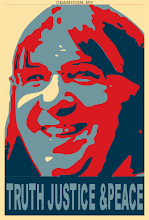Chain of Fools

In its Philadelphia Journal, the NY Times covers the lockup of liberty in City Takes On U.S. in the Battle of Independence Square, noting:
Hands off our Liberty. That is what Philadelphia officials are saying to a plan by the National Park Service to erect a seven-foot-tall fence behind Independence Hall. One effect of the project would be to bisect the historic square where the Declaration of Independence was publicly read for the first time, on July 8, 1776.Citing Inquirer articles on the Park Service's plans to cordone off the Square, I commented on this issue recently in What Price Freedom? The paper has a follow up piece, Independence Hall security plan is deferred, which reports on an extension of the comment period on the propsed fence after universal objections were raised by politicians and community groups.* * * *Brad Maule, a photographer who moved to Philadelphia in 2000, said that ever since Sept. 11, 2001, he had watched with consternation as security measures encroached on access to the monuments.
It was not long ago that visitors across the street from Independence Hall could still touch the Liberty Bell itself, said Mr. Maule, whose daily commute to work takes him past the hall and whose blog has been covering the fight over the fencing. “Then came the velvet ropes,” he said, “cordoning the bell off.”
Tourists were also once able to meander through the arches along Chestnut Street directly into Independence Square. No longer. And the height of irony, Mr. Maule said, is that after the Liberty Bell was placed in a new and more secure building in 2003, a metal detector was installed in the exact location from which it had been moved.
In assessing appropriate security measures, the Park Service recommended "construction of a security hut on Independence Square." In typical bureaucratic fashion, the Park Service said of its preferred plan:
It also would include construction of the preferred plan's 7-foot-high wrought-iron fence about 130 feet south of Independence Hall, blocking almost the entire northern section of the square, where the Declaration of Independence was first publicly proclaimed on July 8, 1776.As Brad Maule said in his July 31 post on this issue:
In its assessment, the park said that construction of the fence would have a minor-to-moderate adverse effect, "depending on visitor preferences related to the need to retain the historic characteristics of the square and the value they place on freely moving about the park unimpaired by security structures."
But John Gallery, director of the Preservation Alliance, wrote in the alliance's comment that the fence "totally alters the historic character of the square," established in the 1730s by the colonial assembly to be an open public space forever. "This is more than a 'moderate' impact," he continued. "It alters the character and significance of Independence Hall and Independence Square as symbols of liberty and freedom. It is inappropriate." (Emphasis added)
A seven foot wrought iron fence, no matter how ornate and detailed (and given it's 2006, that's highly doubtful), sends the message "stay out; privileged visitors only; access restricted." . . . On July 8, 1776, the Liberty Bell had no crack, nor was it yet known as the Liberty Bell. It was just a nicely crafted and dignified bell residing in the tower of Independence Hall, then simply the PA State House. On that day, the bell was rung to gather Philadelphians -- Americans -- in this very Square for the first public reading of the Declaration of Independence. Since that day, the site has been visited, used as a symbolic platform for efforts toward freedom, by the likes of Abraham Lincoln, women's suffragists, Martin Luther King and civil rights activists, gay rights activists, Nelson Mandela and others.(Photo via Brad Maule's phillyskyline.com)
Since 9/11, those events have become historical minutia. Before it was torn down, Mitchell/Giurgola's exemplary bicentennial-era Liberty Bell Pavilion was in its last days used as the security scanning area for the new Liberty Bell Center, with metal detectors x-raying on the very spot the Liberty Bell once stood. Since 9/11, the arches on Independence Hall, along Chestnut Street between the main Hall and its bookends, the first Supreme Court and Congress Hall, cannot be passed through . . . .

No comments:
Post a Comment